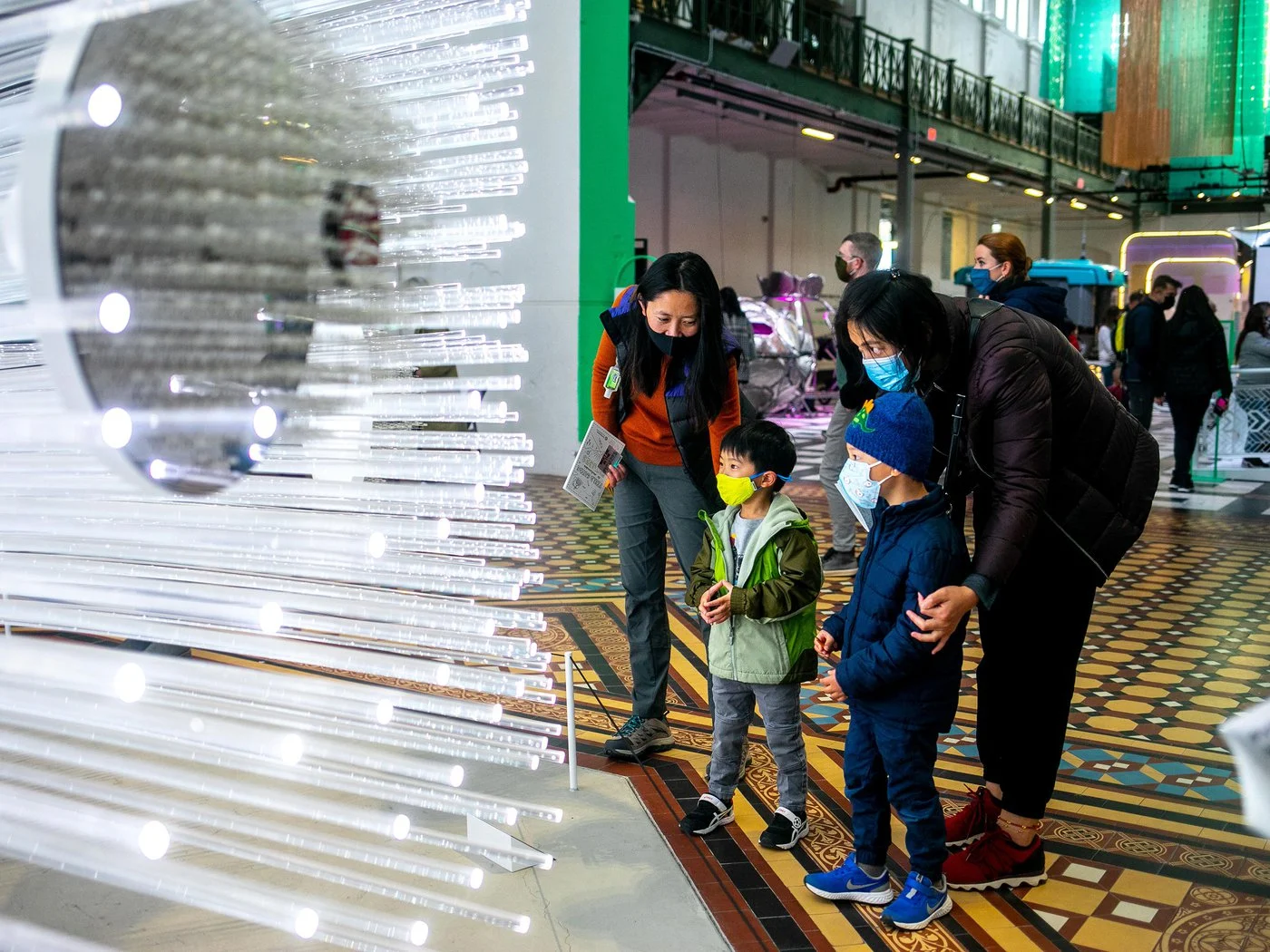New Analysis From IFTF + Smithsonian Futures Beacons Exhibit Sparks Greater Sense of Hope and Agency
Sparking a Sense of Hope & Agency
Sparking a Sense of Hope & Agency
New analysis of more than 1 million insights from 650,000 visitors to first-of-its-kind ‘FUTURES’ exhibit found humans have a ‘hopefulness gap’ and have more faith in innovation and technology than in human cooperation—but shifting this could be a key to shaping the future we want
Sept. 20, 2022, Palo Alto, Calif. — Institute for the Future (IFTF), in partnership with the Smithsonian, today released a new analysis based on the insights from over 650,000 visitors to the museum’s first-of-its-kind “FUTURES” exhibit, showing that if people can better envision the details of a possible future then they are more hopeful and feel more capable of taking actions to make that future a reality.
For over 50 years IFTF’s mission has been to inspire individuals and organizations to imagine future possibilities and turn foresight into actionable insights—and with it create a better future. The “FUTURES Beacons” exhibit at the Smithsonian was grounded in IFTF research on how futures prompts and storytelling can help people imagine the future more clearly and feel more ready to take action. The concept, called “specificity training,” is a form of mental time travel to get the brain to imagine what does not yet exist.
The more than 1 million insights collected from over 650,000 visitors to FUTURES bore this out by showing that futures thinking sparks hope and action: 80% of visitors reported being inspired to act to shape the future they desired, plus a sense of increased responsibility to do so. Despite the common wisdom that scaring people inspires action, FUTURES’ optimistic approach seemed to make huge challenges, like climate change, seem less overwhelming and spark a greater sense of hope and direct agency. Additionally, as a result of this “mental time travel,” 83% of visitors reported being able to imagine a better possible world. It made change seem more realistic, more hopeful, and made the future feel closer.
"We know that most young people today feel anxious about their personal futures and the fate of humanity. We also know that there has been a catastrophic failure across politics, the arts, science, and the public sector to provide believable images of positive futures,” said Jane McGonigal, Director of Urgent Optimists at Institute for the Future. “Apocalypse and dystopia are all too easy to imagine today. The landmark global study published this year in the Lancet Planetary Health journal found that a majority of more than 10,000 young people between the ages of 16 and 25 agreed with the statements that 'humanity is doomed' and that 'I may not have a future.' We urgently need to revitalize our social imagination. We need to collectively create powerful new images, stories and possible paths forward that represent a world we want to live in, futures we would be empowered by, excited by, healed by. The large-scale data and unprecedented insights about the futures that people want that we have generated with FUTURES is invaluable. These data and insights can help community leaders and future-focused organizations like Institute for the Future understand what visions of the future are most likely to cultivate a sense of realistic hope and the agency to act today to make a better world."

This data will inform IFTF's continuing work to highlight the importance of imagination and futures thinking to build agency, supported by analysis from global cultural audience research firm Morris Hargreaves McIntyre (MHM) and exhibition technologists the LAB at Rockwell Group.
Additional highlights from the analysis include:
“We learned so much from talking to over half a million people about the future and are excited to share that knowledge with the field,” said Rachel Goslins, director of the Smithsonian Arts and Industries Building. “This research is a fitting capstone to our groundbreaking exhibit. It is an antidote to those that peddle in fear and an urgently needed tool for those interested in inspiring hope and action about the future. Awareness of a problem doesn’t often lead to change, which continues to be a big hurdle to large-scale solutions like climate change or social division. It’s easy to feel overwhelmed and powerless, and ‘FUTURES’ data shows that fear is not necessary to drive change or impact. The ability to see both a more positive future and one’s role in making it is vital.”
About “FUTURES”
“FUTURES” was on view through July 6, 2022 and filled the historic Arts and Industries Building with 32,000 square feet of new artworks, interactives, prototypes, inventions and “artifacts of the future,” as well as historic objects and discoveries from 23 of the Smithsonian’s museums and research centers. It showcased stories of future-makers who are working tirelessly towards a more equitable, peaceful and sustainable world—inventors and creators, activists and organizers—with a special focus on communities who may not have always had a voice in future-making. Visitors were able to glimpse how past visions have shaped where we are today, as a way to imagine their own version of humanity’s next chapter.